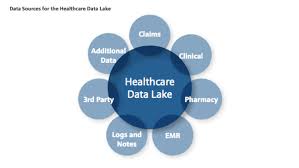Healthcare Data Interoperability
09/18/2021 By Kate Gamble
When it comes to interoperability, the idea is simply for healthcare organizations to “have access to all the data that’s available on our patients and providers,” said Craig Richardville, Chief Information & Digital Officer at SCL Health, during a recent panel discussion. “I think we’re all in the spirit of making sure that happens.”
The problem is that there’s nothing simple about sharing data across systems. In fact, interoperability remains one of the most difficult tasks facing CIOs and other leaders. “It’s like having a bunch of roads that don’t connect unless you build a bridge,” he added.
In many cases, health information exchanges (HIEs) serve as that bridge, but they’re limited in terms of capabilities, and often come with a high price tag. For some organizations, platforms like Epic’s Care Everywhere offer a viable solution for sharing data — as long as they are Epic users.
But does that constitute interoperability? Michael Ames, Senior Director of Healthcare & Life Sciences with SADA, isn’t quite sure. What he does know is that patients and providers are beginning to expect more in terms of data access, and if leaders didn’t already feel the pressure to make that happen, they will now.
“There’s no easy button for any of this,” he said. “This is hard stuff.” During the discussion, Ames, Richardville and Zafar Chaudry, MD (Chief Digital & Information Officer with Seattle Children’s), broke down the biggest roadblocks to interoperability and what leaders can do to overcome them.
“An exciting moment”
The first step, according to Ames, is recognized that the definition — or, perhaps, the interpretation — of interoperability has evolved. “For a long time, we’ve been pushing on this rock, trying to get it to move and trying to get healthcare systems to think about interoperability as more than just connecting internal clinical systems to support operations,” Ames said. Rather, it’s thinking about how to “free the data and get it into the hands of other organizations and people who can do interesting things with it.”
This change in thinking, he noted, represents “an exciting moment” in healthcare. “I’m excited to see how it feeds into the innovation cycle, and how new technologies can improve the delivery of patient care.”
And although that’s encouraging, the problem is that most of the challenges involving interoperability don’t stem from technology, but from people and processes.
“It’s the age-old problem,” Chaudry noted. “We have technology that connects, but the vendor or health system doesn’t want to share data or connect.”
Unanswered questions
This became clear well over a decade ago when the National Cancer Institute developed the cancer Biomedical Informatics Grid (caBIG) to enable the seamless exchange of information between clinical research and care delivery, according to the Journal of Clinical Oncology. However, it fell short of its goal to “connect everyone’s systems and data,” said Ames; not because the capabilities weren’t there, but because of the regulatory and patient consent issues. “It was a naïve belief on the part of the industry that if we have internet and can get grid computing and shared authentication going, then we could really make something happen.”
What killed it, he recalled, was the many unanswered questions, such as: ‘who says we can share the data?’ ‘What’s going to happen with the data?’ ‘And if there’s a breakthrough, who gets credit?’ The list goes on.
Unfortunately, many of those questions remain, especially around ownership of the data. An organization like Seattle Children’s, which has been in service for more than 100 years, has collected millions of patient records, according to Chaudry. “Who does the data really belong to? Does it belong to the patient? The health system? The insurance company that paid the claim on a particular case? Because if it belonged to the patient and we needed only patient consent to share the data, it would make things simpler.”
And although the panelists agreed that the 21st Century Cures Act is helping to move the needle in the direction of patient ownership, another sticking point remains: how to get patients to opt in, and enable organizations to “crunch the data” and glean insights that can lead to improved outcomes.
The next step, noted Richardville, is determining how to “make the data interoperable and move it around, and ensure we have the proper consent that’s documented for the security and privacy of our patients.”
Shifting the mindset
It’s a lot to process, but it can be done — if IT executives and vendors are willing to work together, he added. “It’s a shift in mindset to being a partner and helping them understand the complexities in trying to provide the right information for your clinicians to make better decisions.”
In other words, the more vendors understand about the challenges being faced, the more likely they’re able to help create solutions.
Finally, CIOs need to continue to be an advocate and, oftentimes, a mediator between different parties, noted Chaudry. “You have clinicians, system vendors, and cloud vendors. The CIO needs to bring them together,” while also prioritizing patient needs.
“That’s the best way to deliver care; to have all the information available to that provider, and have it all presented in a manner that allows people to make better decisions.”
Category: Uncategorized

